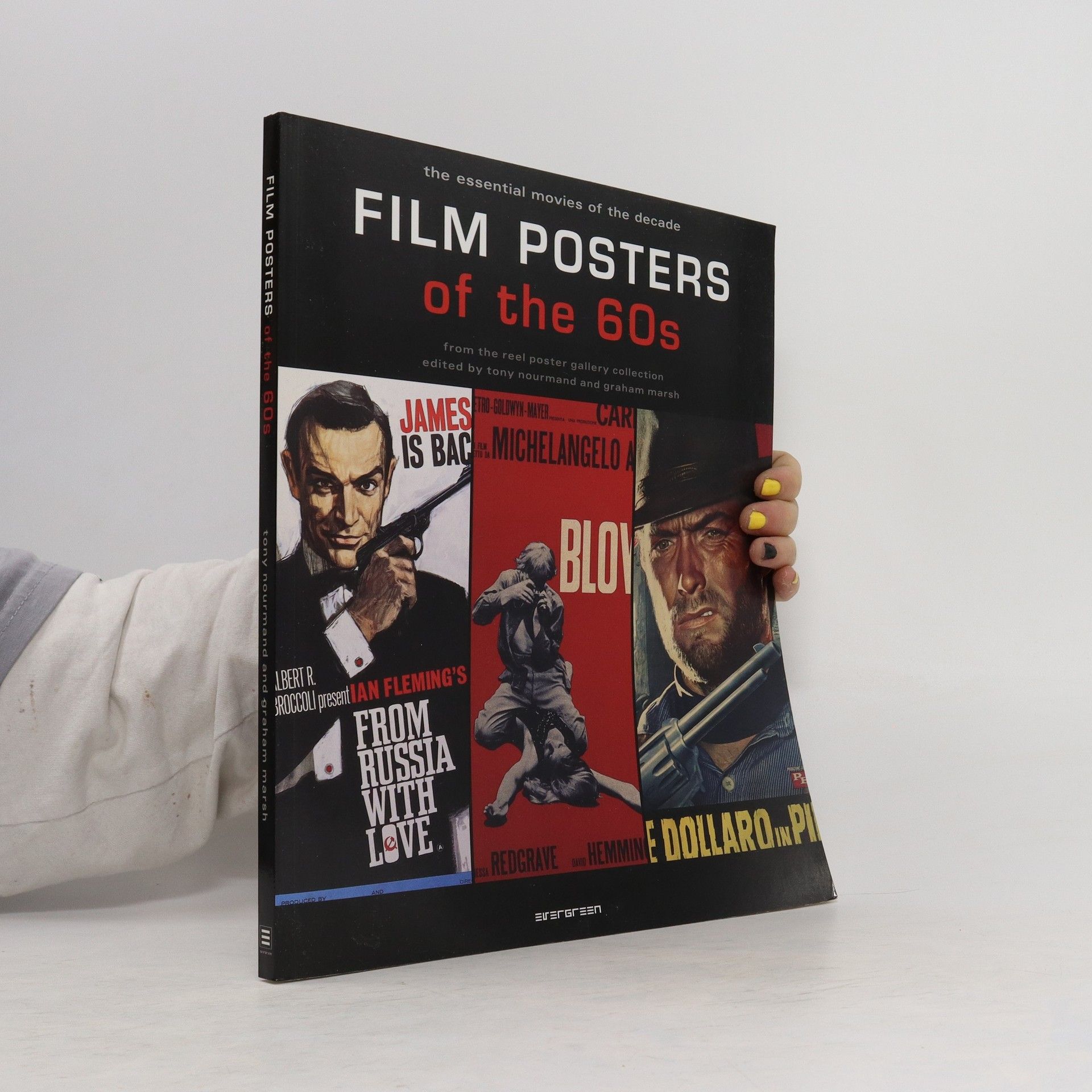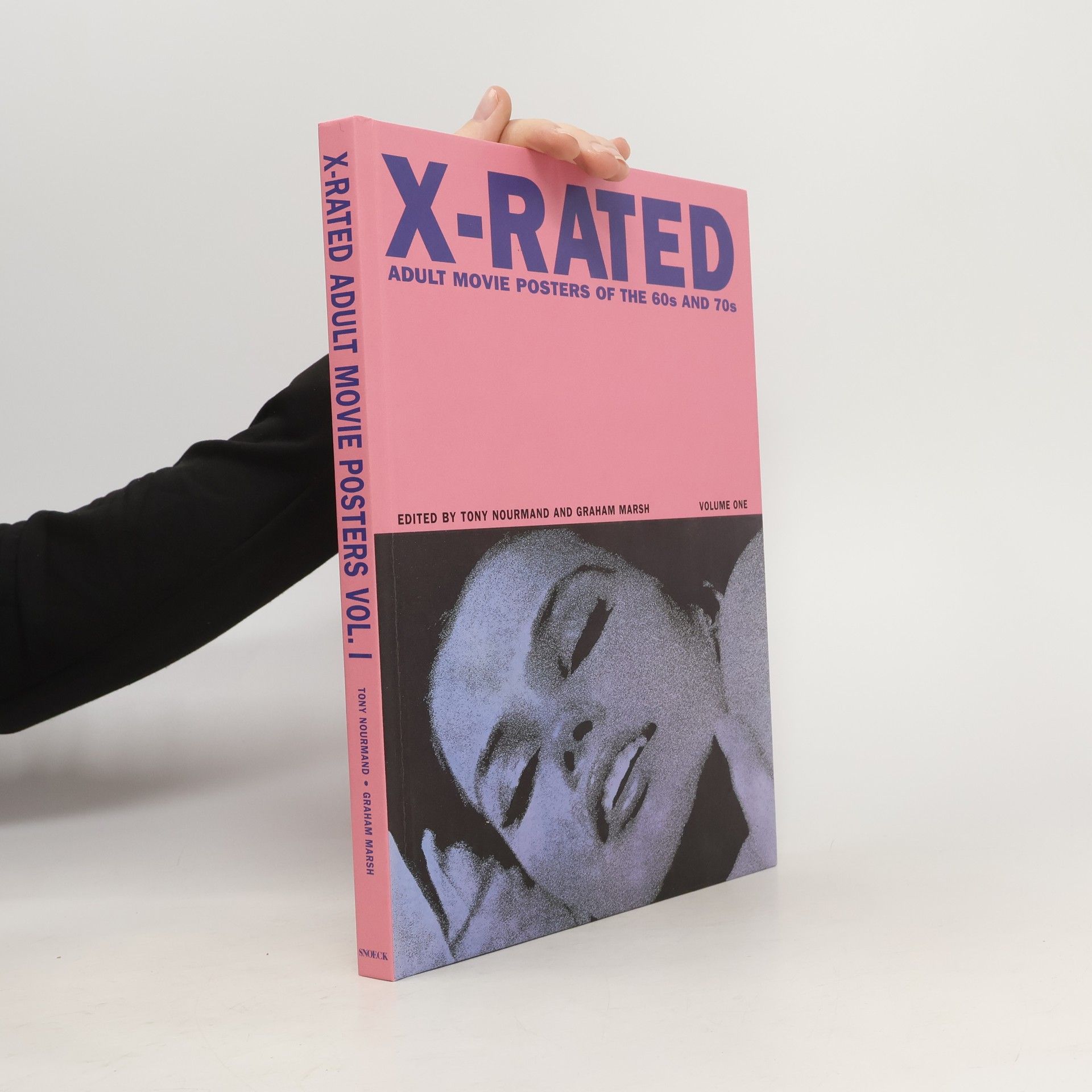The Cover Art of Blue Note Records is Graham Marsh and Glyn Callingham's classic collection of the unparalleled record sleeves produced by the celebrated Blue Note record label. Both a comprehensive guide to an acclaimed label, and an insightful snapshot of graphic design history, The Cover Art of Blue Note Records is a must-have for all Jazz fans.
Graham Marsh Book order






- 2021
- 2005
Exploitation Poster Art
- 192 pages
- 7 hours of reading
Sex, drugs, delinquency, Black Power, and rock ‘n’ roll—these are just a few of the themes that have inspired B-movie makers over the past 80 years. The posters created to promote these movies are fantastic period pieces that evoke all the taboos of bygone eras. Before the Hayes Code of 1934, Hollywood had few the poster for Girl Without a Room, for example, left little doubt as to how the young woman would find accommodation. In the 50s, Beats and juvenile delinquents attracted teens to the drive-ins; in the 60s and 70s came Blaxploitation films like Shaft and the first of Russ Meyer’s mammary-obsessed epics, Faster Pussycat, Kill, Kill. The posters for these films are masterpieces of visual innuendo, offering, in most cases, far more than the movies themselves actually delivered. Tony Nourmand is co-owner of the Reel Poster Gallery in London and a poster consultant to Christie’s; Graham Marsh is a designer and art director. Together, they have produced Horror Poster Art and Science Fiction Poster Art, and collections of 20th-century film posters by decade.
- 2005
Film posters of the 80s
- 128 pages
- 5 hours of reading
The 1980s was an exceptionally fertile period for the cinema, which skilfully reflected the decade's diverse trends and the tastes of an audience obsessed with fashion, music and the latest high tech gadgetry - preferably in matt black. As the US regained confidence in itself during the Reagan years, Hollywood catered to the emerging yuppie market with movies that range from brat-pack capers such as St Elmo's Fire and The Breakfast Club to testosterone driven blockbusters like The Terminator and Die Hard, from the independent, low-budget films of the Coen Brothers to the revival of classic American film noir. The Brits chipped in with A Fish Called Wanda and Chariots of Fire and the Italians with the enchanting Cinema Paradiso, which was one of a number of foreign language films (Betty Blue, Ran, Kagamusha) that broke through into the international market. The wide variety of films on the screens of the burgeoning multiplexes was fully reflected in the poster art of the period, the cream of which features in this book.
- 2005
Film posters of the 40s
- 128 pages
- 5 hours of reading
Lights down, curtain up on the cinema of the 1940s, a decade that produced some of the most critically acclaimed movies of all time. These range from the iconic Casablanca, starring a cynical, world-weary Humphrey Bogart and a never-more-beautiful Ingrid Bergman, to Orson Welles' seminal Citizen Kane, and from the optimistic It's A Wonderful Life to the enigmatic The Third Man, recently voted best British film of all time by the critics. This was the decade when Hollywood introduced cinema audiences to one of the greatest of all genres the film noir, still epitomised by movies like Double Indemnity, Out of the Past, Gilda and The Maltese Falcon - a darkly sinister world of gumshoes, double-crossing dames, bent cops and blind alleys. The world may have been at war for the first half of the decade and Europe in ruins for the second, but this was, in many ways, a golden age of cinema. Moreover, as this book shows, the passage of time has not diminished the impact of the 40s poster art that had contemporary audiences queuing to see the latest releases starring movie immortals like Robert Mitchum and Rita Hayworth.
- 2005
Film posters of the 50s
- 128 pages
- 5 hours of reading
The cinema of the 1950s reflected the mood swings of the post-war generation. Optimistic epics and brittle social comedies rubbed shoulders with socially aware dramas and, faced with the new challenge of television, the studios conjured up a host of fresh attractions: CinemaScope, Vista-Vision and 3D, the curves of Marilyn Monroe and the moody mumbles of Marlon Brando and James Dean. In Hollywood, veteran actors circled the wagons against the massed assault of juvenile delinquents as the Wild West became the Asphalt Jungle. In Britain, upper lips remained stiff - though a smile or two was permitted at the latest Ealing Comedy. Films from Italy and France, where the 'New Wave' was starting to break, were still considered strictly high culture, if not threateningly risque, in the Anglophone nations. The images in this book represent the full range of poster art which attracted world wide cinema audiences to the movies of the decade. Some may be familiar, others, long forgotten, will come as surprises. Most are still as fresh and powerful as the day they first appeared.
- 2005
Film posters of the 60s
- 128 pages
- 5 hours of reading
The cinema of the 60s reflected the mood of a decade when everything - art, fashion, politics, philosophy - seemed to be in flux, and the film posters of the period provide a kaleidoscope of images that capture the very essence of a turbulent decade. From french 'new wave' to british 'kitchen sink', from Sergio Leone to Andy Warhol, from Bond to Barbarella, the cinematic ethos and icons of the 60s are all represented here as they were first perceived by audiences in London and Los Angeles, Tokyo, Turin, Berlin and Bangkok.
- 2005
Whatever your taste in movies, the filmmakers of the 1990s had it covered. On the one hand, the big studios took advantage of the ever-increasing sophistication of computer-generated imagery to produce spectacular, mega-budget 'event' movies like Titanic, The Matrix and Mission: Impossible; on the other, a new generation of independents like Tarantino and the Coen Brothers was winning its spurs with low-tech and often low-budget productions such as Reservoir Dogs and The Big Lebowski. Spielberg turned his attention to the Second World War with Saving Private Ryan, Eastwood and Costner gave the Western a new lease of life with Unforgiven and Dances With Wolves, and the Brits chipped in with two unexpected successes, The Full Monty and Trainspotting. From the eerie psychosis of The Silence Of The Lambs to the romantic fantasy Pretty Woman, this was a decade that offered something for everyone. Hollywood may have become besotted by all things digital, but print on paper, in the form of the poster, remained one of the most important means of promoting movies of all kinds, and the poster artists of the 90s proved that they could still produce striking and alluring images. This book reproduces the pick of the decade.
- 2005
Film Posters of the 70s
- 128 pages
- 5 hours of reading
The cinema of the 1970s reflected both the anxieties and the escapism of an angst-ridden decade. The bleak realism of Taxi Driver and the political paranoia of All the President's Men co-existed with the androgynous fantasy of Rocky Horror Picture Show. In the 70s, 'blaxploitation' made its first appearance; Last Tango in Paris and Emmanuelle edged 'porno-chic' into the mainstream; 'ethno-cool' reached new heights in The Godfather'; Clint Eastwood traded his poncho for a .44 Magnum in Dirty Harry; Star Wars blasted audiences into hyperspace; Jaws hit the New England beaches and Apocalypse Now did for Huey helicopters what Saturday Night Fever did for white suits and flares. The images in this book represent the full range of poster art which attracted world-wide cinema audiences to these and many other movies and reveals just how much current fashion owes to the style of the 70s.
- 2003
X-Rated Adult Movie Posters of the 60s and 70s
- 160 pages
- 6 hours of reading
Sex sells! It's no secret that since moving pictures were invented, distributors and theater owners realized that nothing really promotes a movie better than blatantly sexual advertising. X-rated adult movies reached their peak in the 1960s and 70s, with films like Debbie Does Dallas and Deep Throat. While some films were hard-core and left nothing to the imagination, most enjoyed the art of innuendo, which is to say, you couldn't tell whether the participants who were getting it on were faking it--or doing it for real. Even though most of the adult movies of the 60s and 70s have faded into cinematic history--and their stars have retired into elderly care homes for the well-endowed (giving new meaning to the term "nursing home")--what remains, as a lasting legacy, are the posters. If the poster art in this book evokes those far-off days of suspender belts, stockings, and eye-popping, gravity-defying brassieres, not to mention outsize Y-fronts, then that alone is worth the cover price. It's practically cheaper than a movie these days, anyway.
- 2003
Film Posters of the 30s: The Essential Movies of the Decade
- 128 pages
- 5 hours of reading
The 1930s was the cinema’s age of innocence, a time when the emphasis was on escapism and entertainment. Cary Grant and Katharine Hepburn were Bringing Up Baby, Busby Berkely’s precision-drilled chorus girls were Flying Down to Rio, Fred Astaire was donning his Top Hat, and John Wayne was climbing on the Stagecoach to stardom. As this stunning collection of poster art reveals, it was also the decade of the illustrator, with Al Hirschfeld, Hap Hadley, and Alberto Vargas setting new standards in graphic design. Color may have only just begun to appear on cinema screens, but on the hoardings outside, the hues were bold and dazzling as never before. Tony Nourmand is co-owner of the Reel Poster Gallery in London and a poster consultant to Christie’s; Graham Marsh is a designer and art director. Together, they have produced Horror Poster Art and Science Fiction Poster Art, and collections of 20th-century film posters by decade.



